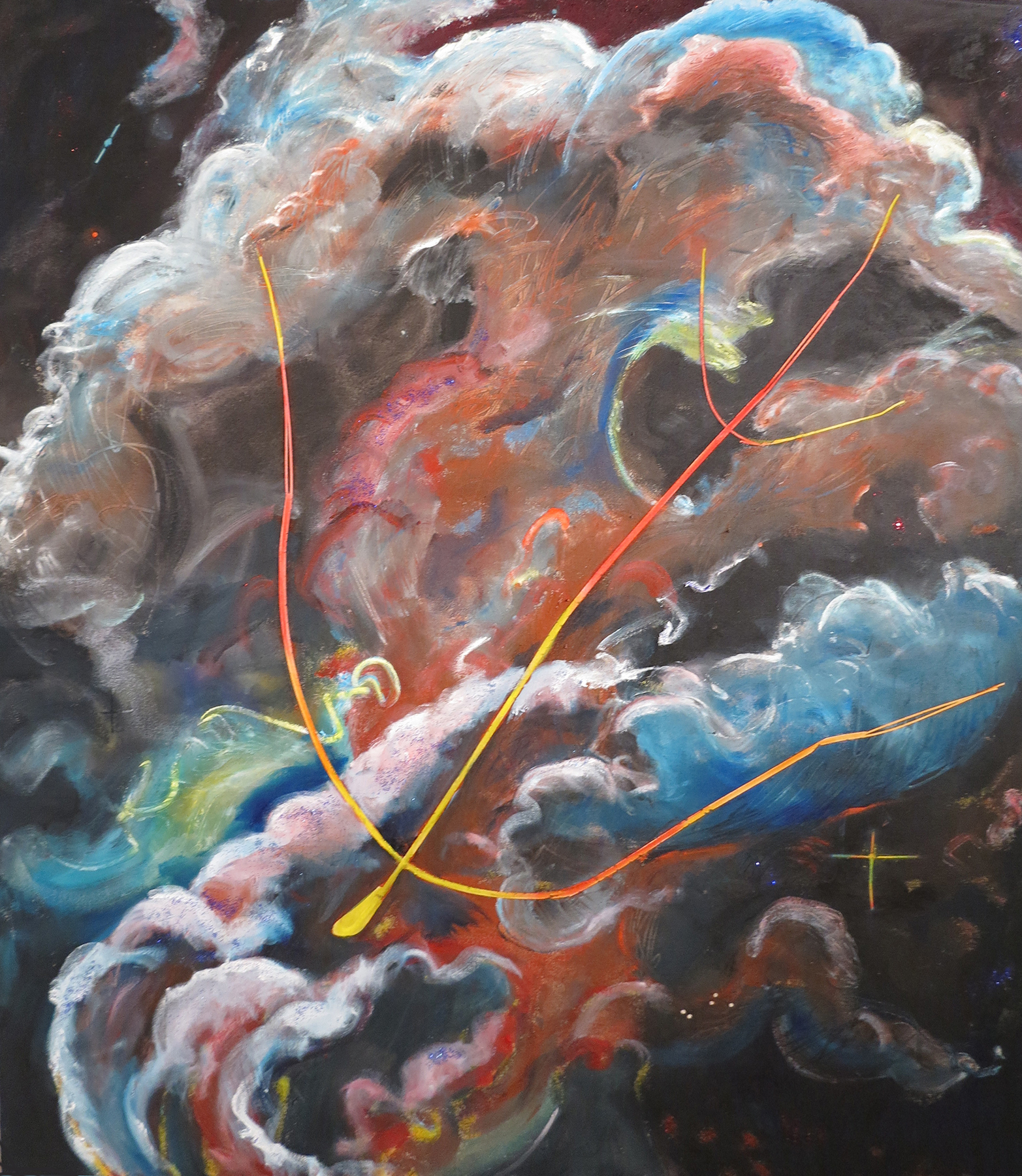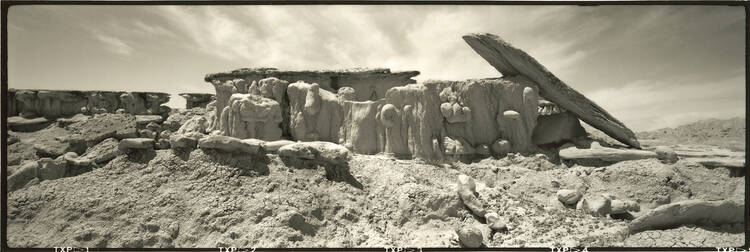The black ink on paper drawings by Jesuit artist Gene Geinzer show small corners of Chinese villages without the local people who pass by every day: He finds here a beauty in the everyday with the eye of the architect that he is. Working with graphite on paper, Sammy Chong, also a member of the Society of Jesus, uses the image of the Minotaur placed in everyday contemporary settings to explore “a reality that embraces what is different at cultural, political, racial, economic, and sexual levels.” Society creates its monsters.
A third Jesuit, Trung Pham, presents three large pieces of oil painting on unstretched canvas. Each of these is ruptured by a slit or a hole. The abstract works of color and texture thus broken, he hopes, will provide “a true encounter which discloses something that remains beyond, incomprehensible and unassimilable.”
“Jesuit Spirit in the Arts,” a recent exhibition at St. Joseph’s University in Philadelphia, brought together the work of these and nine other contemporary Jesuit craftsmen. The show celebrated 40 years since the first art exhibition at St. Joseph’s of the same title, which gathered artworks from Jesuits and laypersons working at Jesuit colleges and universities all over the free world.
Sammy Chong uses the image of the Minotaur placed in everyday contemporary settings to explore “a reality that embraces what is different at cultural, political, racial, economic, and sexual levels.”
The media these artists work in are common to many artists. Black and white or color photography, acrylic on canvas, ink on paper. The works represented here bring the medium or the technique to a high level of achievement. The three black and white photo portraits by Brad Reynolds reveal deep personality and rich history of some venerable Jesuits. The landscape prints by Mike Flecky find transcendent beauty in geography one might often drive past and barely nod to in appreciation.
Two photographers work in color through different media. Don Doll, using coated pigment on canvas, produces large works that are a tribute to the people and the landscape of the Lakota Sioux of South Dakota. Nick Rashford presents three large cibachrome prints, a canal in Venice, the Vietnam Memorial and a Chinese child; his poetry accompanies the images.
Josef Venker, who has worked in ceramic, paint, prints and other conventional media, now works in objects that are lost and found, broken or discarded. His coffee sack with an image of Guadalupe speaks of everyday labor; his seven broken wine glasses with candles inside in the “Menorah of Remembrance” recall that enlightenment persists even in brokenness.
Arturo Araujo works in a variety of printmaking techniques to present colorful abstract images that call the viewer to remembrance.

Three other artists work in color in a great variety of styles and subjects. Oscar Magnan, a professional archaeologist, presents stunning realist portraits in oil on various surfaces; subjects who “are actors in the emotional landscapes” he paints. Michael Tunney displays three of a series “Siblings,” working in pencil and watercolor on paper, that tell of his “emotions, psyche, imagination, and memories reaching into the past or just round the corner.” And Dennis McNally, who was part of the exhibition 40 years ago, works in acrylic on canvas to interpret a variety of religious and other subjects. McNally is a professor at St. Joseph’s University, and many of his paintings also adorn the walls outside the exhibition gallery.
The exhibition also presented videos that explored the work of Robert VerEcke, who works in liturgical dance and other media, and of Joseph Hoover, an actor and playwright (and poetry editor at America) who explores religious themes.
In other works, faith is a more dynamic presence.
It is obvious that faith lies behind the religious subject matter of many of these works. The “Holy Family” (Dennis McNally), for example, is specifically religious; so, too, are “The Apparition (A New Tilma)” with its image of Guadalupe and the “Menorah of Remembrance” (both Josef Venker).
But in other works, faith is a more dynamic presence. Arturo Araujo explains that he uses Matthew Fox’s concepts in his book Original Blessing to “explore the visual forms of four different pathways” to encounter the divine. He also uses the explicitly religious in, for example, “Juxta crucem lacrimosa” (“in sorrow near to the cross” from Stabat Mater), an image of a sad peasant woman.
The cry for justice emerges from the brilliant photography of Don Doll and his Lakota subjects, strong in their dignity, confident in their character, even as they struggle with the effects of their treatment through centuries by white immigrant powers.
Sammy Chong’s Minotaurs are a bold graphic statement of our human ability to demonize or separate out one who does not fit the status quo, one who is different. “The Minotaur’s alienation is rooted in the fact that he is reviled by others.” Being a monster is not of his essence but rather “is imposed upon him by the mainstream.”
The sheer humanity of Oscar Magnan’s portraits is a cry for the justice of simple respect for others we may not know. In “Single Parent,” a father and his daughter, clinging to him, look to us for something. Has the wife and mother died recently? Do they maybe want us just to be with them at a dark time?
These images find faith in abundant variety. They find it in the complex portraits of those veteran Jesuits who have fought the good fight, run the race and finished the course. They find it in family relationships as “Siblings” enjoy the beach together or simply hang out. They find it in the “process of breaking open or bursting,” which “is manifested in both moral and aesthetic experiences,” long a trademark of Jesuit education and mission.










